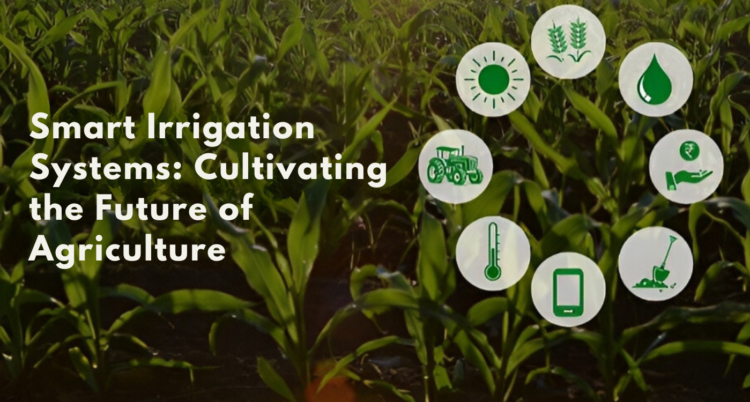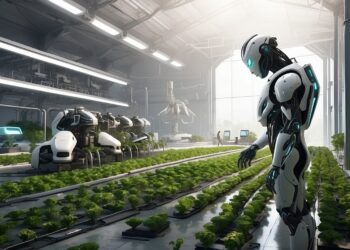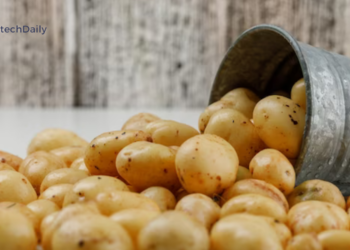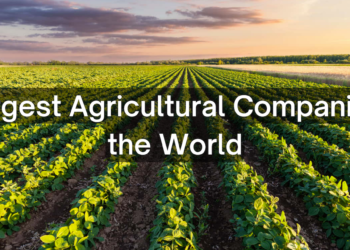Smart irrigation systems have emerged as game-changers in modern agriculture. These innovative technologies combine the power of data analytics, automation, and precision to revolutionize the way water is managed in farming. In an era where water resources are increasingly stressed, and sustainability is paramount, smart irrigation systems offer a promising solution for optimizing water use, increasing crop yields, and reducing environmental impact. This article delves into the world of smart irrigation systems, exploring their components, benefits, challenges, and the future of sustainable agriculture.
Understanding Smart Irrigation Systems
Smart irrigation systems, also known as precision irrigation or digital irrigation, represent a paradigm shift in the age-old practice of watering crops. These systems integrate various technologies to deliver water precisely where and when it is needed, based on real-time data and the specific requirements of the crops. Key components and technologies include:
- Sensors: Soil moisture sensors, weather stations, and plant sensors collect essential data to monitor conditions and determine when irrigation is required. This data-driven approach ensures water is applied only when necessary, preventing over-irrigation.
- Automation: Smart irrigation systems often feature automation, allowing for remote control and scheduling of irrigation. This automation can be based on weather forecasts, soil moisture levels, and crop type, enhancing efficiency and reducing manual labor.
- Data Analytics: Advanced analytics and algorithms process the data gathered from sensors and other sources. This analysis enables predictive irrigation, adjusting water delivery in real-time to optimize crop growth while minimizing water usage.
- Drip Irrigation: Drip systems are commonly used in smart irrigation due to their precision. They deliver water directly to the root zone of plants, reducing evaporation and water waste compared to traditional overhead irrigation methods.
The Need for Smart Irrigation Systems

Agriculture, one of the most water-dependent industries, faces increasing challenges due to climate change, water scarcity, and a growing global population. In this context, the need for smart irrigation systems becomes evident. These systems address critical issues and offer numerous benefits:
- Water Scarcity: Many regions around the world are experiencing water scarcity. Smart irrigation systems can help optimize water use, ensuring that every drop is efficiently utilized, thus conserving this precious resource.
- Climate Change: Changing weather patterns, including prolonged droughts and erratic rainfall, are impacting agriculture. Smart irrigation systems offer a level of adaptability by adjusting water application based on real-time weather data, reducing crop stress during dry spells and minimizing waterlogging during heavy rains.
- Soil Health: Over-irrigation can lead to soil erosion, nutrient leaching, and decreased soil quality. Smart systems enable precise control over water delivery, protecting the soil’s structure and fertility.
- Crop Yield and Quality: Consistent and adequate moisture is essential for optimal crop growth and yield. Smart irrigation systems provide crops with the right amount of water at the right time, leading to healthier plants and higher-quality produce.
- Energy and Cost Savings: Traditional irrigation methods often result in energy waste and high operational costs. Smart systems, by reducing water use and labor requirements, offer substantial savings to farmers.
Types of Smart Irrigation Systems
Smart irrigation systems encompass various technologies and approaches, each with its unique features and applications. Some of the primary types include:
- Drip Irrigation: Drip irrigation is a widely adopted smart system that delivers water directly to the root zone of plants through a network of pipes and tubing. This method minimizes water wastage and optimizes water use by reducing evaporation and runoff.
- Soil Moisture Sensors: These sensors are buried in the soil to monitor moisture levels. When the soil becomes too dry, the system triggers irrigation, ensuring that crops receive water precisely when needed.
- Weather-Based Systems: These systems rely on real-time weather data, including temperature, humidity, and rainfall forecasts, to adjust irrigation schedules. By incorporating weather predictions, they avoid unnecessary watering during or shortly after rain events.
- Remote Control and Automation: Smart irrigation systems often feature remote control and automation. This allows farmers to manage irrigation from their smartphones or computers, making it convenient to adjust settings in real-time.
- Subsurface Drip Irrigation: This advanced system places irrigation lines below the soil surface, reducing water loss through evaporation and minimizing contact with plant foliage, which can reduce disease risk.
- Agricultural Weather Stations: These stations provide on-site weather data to inform irrigation decisions. They measure conditions such as temperature, humidity, and wind speed, allowing for precise water application based on local conditions.
- Scheduling Systems: These systems use predictive algorithms to schedule irrigation based on a combination of weather forecasts, soil moisture data, and crop requirements, optimizing water use and crop health.
- Aquaponics and Hydroponics: These systems, which are often used in controlled-environment agriculture, combine fish farming with plant cultivation. Fish waste provides nutrients for the plants, creating a closed-loop system that minimizes water use and waste.
By understanding the pressing need for efficient water management in agriculture and the various types of smart irrigation systems available, farmers can make informed choices to optimize their crop production while conserving valuable resources. These systems are not only a response to the challenges of modern agriculture but also a sustainable solution for ensuring food security in a changing world.
Benefits of Smart Irrigation Systems
Smart irrigation systems offer a wide range of advantages, making them an essential component of sustainable agriculture:
- Water Conservation: By delivering water precisely where and when it is needed, smart irrigation systems reduce water wastage and contribute to water resource conservation, crucial in regions facing water scarcity.
- Increased Crop Yields: Precision irrigation ensures that crops receive the ideal amount of moisture, resulting in healthier plants and higher yields.
- Cost Savings: Efficient water use and reduced labor for manual irrigation translate into cost savings for farmers.
- Environmental Sustainability: Lower water consumption and reduced chemical runoff contribute to a more environmentally friendly agricultural system.
- Remote Monitoring: The ability to monitor and control irrigation remotely provides farmers with real-time insights into their fields, allowing for immediate adjustments in response to changing conditions.
Challenges in Implementing Smart Irrigation Systems

While the benefits of smart irrigation systems are substantial, their implementation is not without challenges:
- Initial Investment: The cost of sensors, automation equipment, and software can be a barrier for small-scale farmers. However, this is often outweighed by long-term savings and benefits.
- Data Accuracy: The reliability of sensors and data accuracy is critical for making precise irrigation decisions. Maintenance and calibration are necessary to ensure data integrity.
- Technological Literacy: Farmers may need training to operate and interpret data from smart irrigation systems effectively.
- Infrastructure: Access to reliable internet connectivity in rural areas is essential for real-time monitoring and control.
Applications and Success Stories
Smart irrigation systems have found success across a range of agricultural settings, from small-scale farms to large commercial operations. Some notable examples include:
- California Almond Orchards: In California’s drought-prone Central Valley, smart irrigation systems have been widely adopted in almond orchards. These systems monitor soil moisture levels, enabling growers to optimize water use and minimize the environmental impact of almond farming, a traditionally water-intensive crop.
- Indian Precision Farming: India, with its diverse agricultural landscape, has seen the adoption of smart irrigation in various regions. Farmers are using sensors to manage water resources more efficiently, resulting in higher yields and reduced input costs.
- Australian Cotton Farms: Cotton is a water-intensive crop, and Australian cotton farmers are embracing smart irrigation to improve water efficiency. Real-time data on soil moisture and weather conditions help them make informed decisions about when and how much to irrigate, reducing water consumption.
- Israel’s Arid Farming: Israel, known for its expertise in water management, relies heavily on smart irrigation systems to support agriculture in arid conditions. These systems are central to the success of Israeli agriculture and its export of crops like cherry tomatoes and bell peppers.
The Future of Smart Irrigation
As agriculture grapples with the challenges of climate change, water scarcity, and the need for sustainable practices, smart irrigation systems are set to play an even more significant role. The future of smart irrigation includes several exciting developments:
- Integration with Precision Agriculture: Smart irrigation systems will be integrated with other precision agriculture technologies, including GPS-guided tractors, remote sensing, and drones, to create a holistic approach to farming.
- Enhanced Data Analytics: The use of artificial intelligence and machine learning will allow for more sophisticated data analysis, enabling predictive irrigation based on historical data and forecasts.
- Innovations in Sensor Technology: Sensor technology will continue to advance, becoming more affordable and precise, making smart irrigation accessible to a wider range of farmers.
- Global Adoption: Smart irrigation systems will become more widely adopted worldwide, helping to address food security concerns by increasing crop yields while conserving water resources.
- Customized Solutions: Tailored systems for specific crops and environments will become more prevalent, allowing farmers to fine-tune irrigation for the unique needs of their operations.
Conclusion
In a world grappling with water scarcity, climate change, and the increasing demand for sustainable agriculture, the imperative for smart irrigation systems has never been more pronounced. These systems offer a range of benefits, from conserving water resources and mitigating the impacts of climate variability to enhancing soil health, improving crop yields, and reducing operational costs.
As the global population continues to grow, smart irrigation is poised to play a pivotal role in securing our future food supply. By optimizing water use and harnessing the power of data and technology, these systems exemplify the path forward in achieving a more sustainable and resilient agricultural landscape. Smart irrigation systems not only address the exigencies of the present but also herald a more promising and sustainable future for agriculture worldwide.













